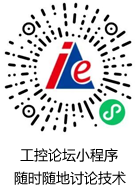汽车制造商并不需要更快的循环周期 点击:181 | 回复:0
发表于:2008-06-17 23:46:33
楼主
Car makers don't always want faster cycle times
Charles Bates
11/01/1998
For some, the goal is to increase uptime by reducing potential sources of downtime.
When Ford sat down with Kingsbury to discuss new transfer line projects, there was no mention of decreasing cycle times. Jack Birdsong, senior process engineer at Ford's Sharonville, Ohio, plant says his only intent was to improve uptime for two existing part-manufacturing processes. To accomplish this, Ford—working with Kingsbury, a machine-tool company in Keene, N.H.—eliminated potential downtime by lessening the number of process stages and engineering problem areas from two new transfer lines.
The success of the first project hinged on free part transfer. In free transfer, which is nothing new, parts are clamped (for a machining operation), then unclamped (for transfer to the next station), clamped again (for the next machining operation), and so on down the line until the part is complete. This type of line moves parts using features of the workpiece it-self, instead of multiple pallets. "There aren't many companies that build free transfer (non-palletized) lines," says Randy Lavigne of Kingsbury, "but it's a niche we've had in the market." Although how Ford wanted to use free transfer was a first for Kingsbury.
What sets the Ford line apart, explains Birdsong, is that it diamond mills and drills automotive valve bodies using free transfer. "Other plants have tried to diamond mill," he says, "but did it in fixturized-type operations that couldn't relieve part stress."
Rough milling the valve bodies creates stored energy in the part. Unclamping afterwards releases these detrimental forces that can flex, bend, or move the part prior to a crucial finishing operation. With free transfer, the new line diamond mills parts so flat that Ford no longer does a final surface lapping.
"The final lapping process was a pain," says Birdsong. "To hold part flatness to within 0.001 in. meant constant wheel dressing. Each operator had his own technique, so dressing wasn't consistent. Some days we would get 300 parts/dress and other days only 50/dress."
To marry diamond milling together with free transfer, Ford and Kingsbury designed a special hydraulic clamping system. It rigidly holds the part's periphery with controlled pressure that also prevents bending or twisting of the part. This regulated hydraulic pressure secures parts for removing 0.060 to 0.070 in. of stock off two sides, and then loosens its grip for stress relief and transfer.
A team comprised of Sharonville and Kingsbury personnel determined that existing, in-house Sandvik cutters would work on the new line for swallow milling both the rough and finish passes. These 14-in. diameter diamond cutters rough mill Z surfaces of the 8 3 11-in. valve bodies and, with half the inserts removed, can also be used at the finish-mill station. Birdsong says the plant used diamond milling before but could not reap its full benefits until the switch to free transfer and a conversion to water soluble coolant throughout the transfer line.
The old line milled, drilled, gun reamed, then removed the part and transported it, via monorail, to a parts washer. Parts needed cleaning before being lapped because that process used a coolant different from that of the transfer line's.
Water soluble coolant gives Ford better surface finishes with its diamond tooling, while free part transfer enables the automaker to produce a flat surface. This means Ford can ream the valve body's eight bores at the next operation without part distortion. And because parts are free of residual forces, the line can take off 0.040 in. at the beginning of a hole and as much as 0.085 in. at the full hole depth without affecting the part. Eliminating the final lapping process and converting to water soluble c
Charles Bates
11/01/1998
For some, the goal is to increase uptime by reducing potential sources of downtime.
When Ford sat down with Kingsbury to discuss new transfer line projects, there was no mention of decreasing cycle times. Jack Birdsong, senior process engineer at Ford's Sharonville, Ohio, plant says his only intent was to improve uptime for two existing part-manufacturing processes. To accomplish this, Ford—working with Kingsbury, a machine-tool company in Keene, N.H.—eliminated potential downtime by lessening the number of process stages and engineering problem areas from two new transfer lines.
The success of the first project hinged on free part transfer. In free transfer, which is nothing new, parts are clamped (for a machining operation), then unclamped (for transfer to the next station), clamped again (for the next machining operation), and so on down the line until the part is complete. This type of line moves parts using features of the workpiece it-self, instead of multiple pallets. "There aren't many companies that build free transfer (non-palletized) lines," says Randy Lavigne of Kingsbury, "but it's a niche we've had in the market." Although how Ford wanted to use free transfer was a first for Kingsbury.
What sets the Ford line apart, explains Birdsong, is that it diamond mills and drills automotive valve bodies using free transfer. "Other plants have tried to diamond mill," he says, "but did it in fixturized-type operations that couldn't relieve part stress."
Rough milling the valve bodies creates stored energy in the part. Unclamping afterwards releases these detrimental forces that can flex, bend, or move the part prior to a crucial finishing operation. With free transfer, the new line diamond mills parts so flat that Ford no longer does a final surface lapping.
"The final lapping process was a pain," says Birdsong. "To hold part flatness to within 0.001 in. meant constant wheel dressing. Each operator had his own technique, so dressing wasn't consistent. Some days we would get 300 parts/dress and other days only 50/dress."
To marry diamond milling together with free transfer, Ford and Kingsbury designed a special hydraulic clamping system. It rigidly holds the part's periphery with controlled pressure that also prevents bending or twisting of the part. This regulated hydraulic pressure secures parts for removing 0.060 to 0.070 in. of stock off two sides, and then loosens its grip for stress relief and transfer.
A team comprised of Sharonville and Kingsbury personnel determined that existing, in-house Sandvik cutters would work on the new line for swallow milling both the rough and finish passes. These 14-in. diameter diamond cutters rough mill Z surfaces of the 8 3 11-in. valve bodies and, with half the inserts removed, can also be used at the finish-mill station. Birdsong says the plant used diamond milling before but could not reap its full benefits until the switch to free transfer and a conversion to water soluble coolant throughout the transfer line.
The old line milled, drilled, gun reamed, then removed the part and transported it, via monorail, to a parts washer. Parts needed cleaning before being lapped because that process used a coolant different from that of the transfer line's.
Water soluble coolant gives Ford better surface finishes with its diamond tooling, while free part transfer enables the automaker to produce a flat surface. This means Ford can ream the valve body's eight bores at the next operation without part distortion. And because parts are free of residual forces, the line can take off 0.040 in. at the beginning of a hole and as much as 0.085 in. at the full hole depth without affecting the part. Eliminating the final lapping process and converting to water soluble c
热门招聘
相关主题
- Best online dating for men...
 [3886]
[3886] - 如何和甲方搞好关系
 [6475]
[6475] - 电力英语
 [4432]
[4432] - 求助:西门子直流调速扩容
 [3003]
[3003] - 进线柜可以放中间吗?
 [1537]
[1537] - 求助:开关量输入/输出中的干...
 [4926]
[4926] - 计算机集散型控制系统
 [1777]
[1777] - 目前市场上最好的无线485应用...
 [2961]
[2961] - 控制信号线一般用几个平方的...
 [12696]
[12696] - 仪表基础知识(压力篇)
 [4429]
[4429]

官方公众号

智造工程师
-

 客服
客服

-

 小程序
小程序

-

 公众号
公众号

















 工控网智造工程师好文精选
工控网智造工程师好文精选
